Angkor Thom, Bayon Temple and Angkor Wat
Angkor Thom
Not for the first time, the iPhone alarm beckoned, and we crawled out of bed some minutes after 6am. Fresh and ready for the day (the hotel’s Jasmine shampoo was lovely!), we descended to breakfast, which had a good spread. Tropical fruits, toast, coffee, good croissants, cooked eggs and smoothies.
Outside we met out tuk-tuk driver, Vesna, his name was spelt in the red upholstery. After a trip to the ATM, where the unhelpful cash machine spat out crisp $100 bills, we met our guide for the day. By 8am we were on our way to the temples. Our guide, I can’t remember his name, was wide faced and a little stocky, at least by Cambodian scales. His little finger had a long, vicious looking nail. It’s a status symbol, to show he’s not doing manual labor. Somewhat freaky, but it’s commonplace across Asia and we’re used to it by now.
At the park entrance we had our photos snapped and our tickets bore our faces. Do not lose this! An official punched a hole in the card and we were in, just as a VIP cavalcade of black 4x4s rolled past.
The road into the park was straight and narrow. To the sides were metal roofed huts and dogs ran about the place, the occasional macaque looked for food amongst the dwellings. We continued straight past the magnificent west-facing Angkor Wat, towards Angkor Thom.
Angkor means “city”, our guide told us. “Wat” means temple, which we knew already, and “Thom” means great or big. Angkor Thom is literally the big city.
We approached via the south gate. A bridge crosses a huge manmade moat, and the gate is a decorated narrow archway leading through a towering wall, into the walled city. The bridge is lined with 54 demon gods and guardian gods, good and evil, each holding the body of a giant snake. The snake’s head would’ve been at the front, its tail, it’s believed, is in the kingdom of the gods. Many of the figures were eroded, faces melted by weathering over centuries of wet seasons. Others were renovated or replaced. The gate is topped with a tower, which bears four faces looking in each direction and elephants at its foot, controlled by the Hindu god Indra.
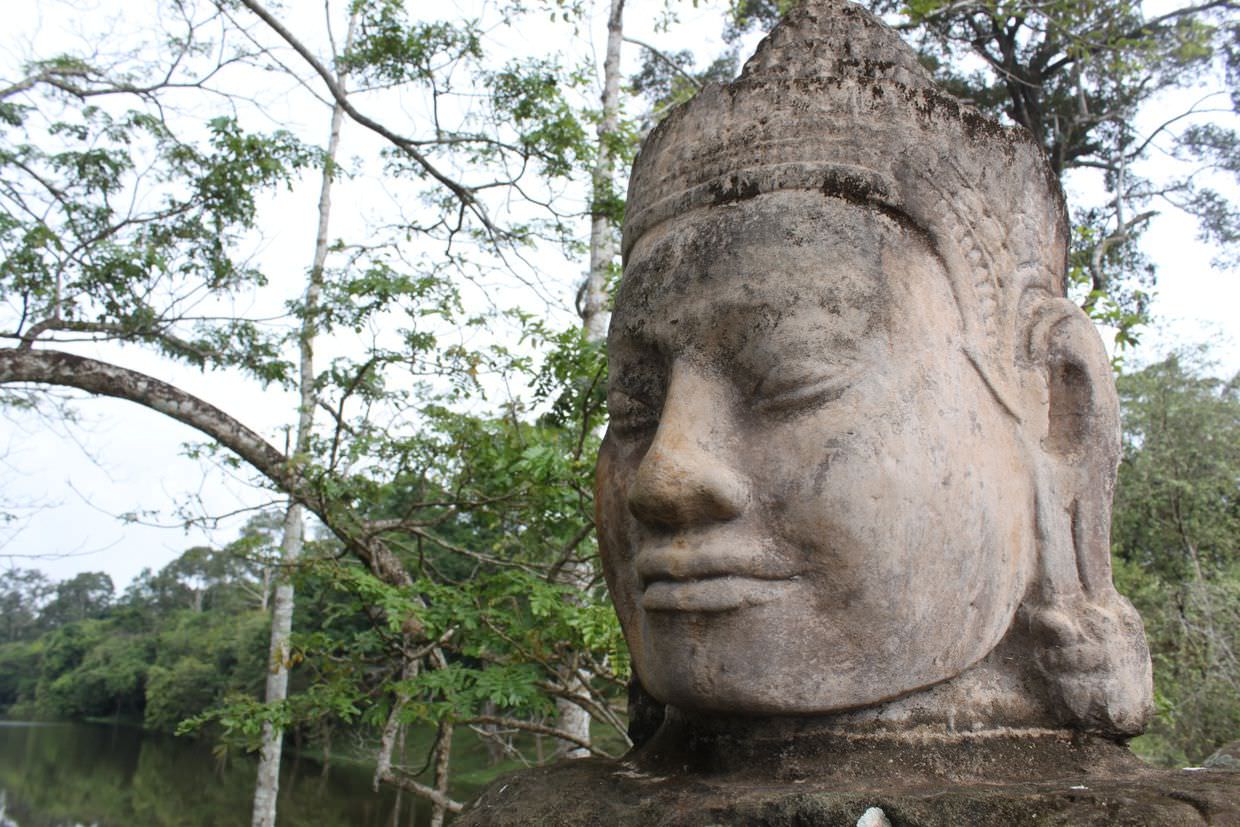
It was already pretty busy, but being the wet season it was, apparently, much quieter than most other times of year. It had seemed like it might rain, but the skies cleared up, and our umbrellas began their dual use as a parasol.
Bayon temple
There are five gates into Angkor Thom and they all converge on Bayon temple. We drove onwards, in our red outfitted tuk-tuk, our guide riding backwards. To our first temple, Bayon, the crazy magnificent Bayon. It is Angkor Thom’s centrepiece. Like most temples it faces East, I forget the reasoning, and it has three levels. It is crowned with scattered towers adorning approximately 200 Lokesvara faces, a bodhisattva, which embodies the compassion of all Buddhas.

Our guide begun with the outermost galleries, or gopura if you like. These stone galleries showed traditional Angkorian Khmer life, and the occasional historic event. Our guide finds a spot and tells us a story, that’s his style, carved into the stone are the Khmer army, a Chinese army and Cham forces, distinguishable by their clothing and stretched ears. Amongst the soldiers were scenes of a cockfight, a market, boats and fishermen, and a man being bitten by a turtle. As Sam takes in everything I sneak about the corridors attempting to find a mystical photo minus blue shirted tourist.
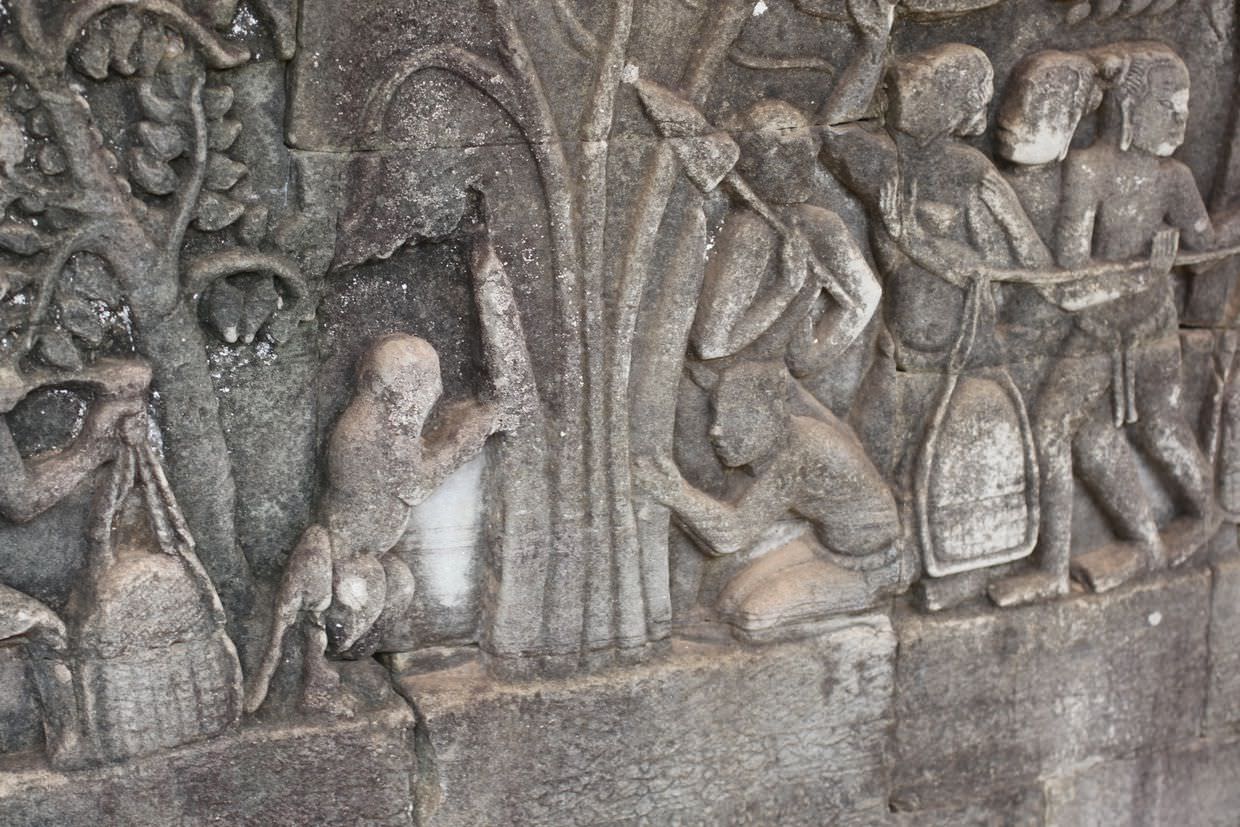
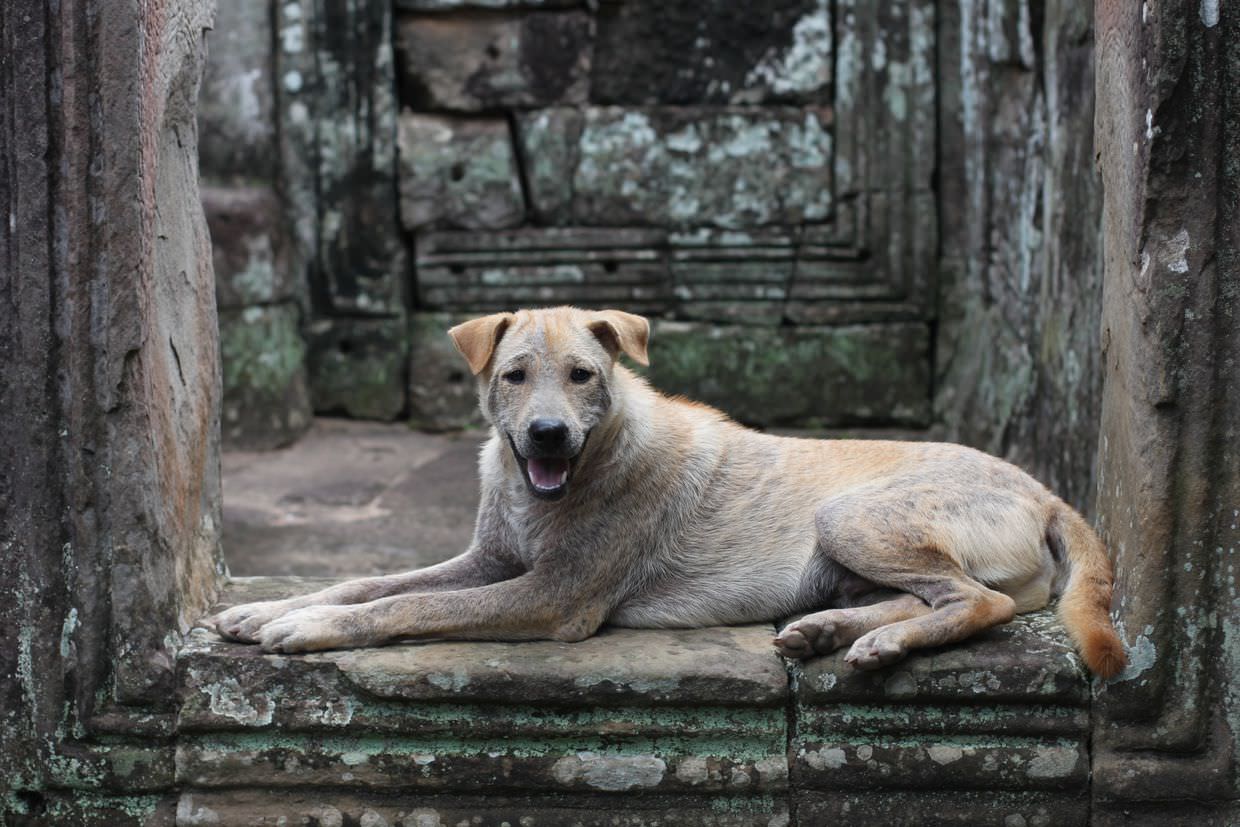
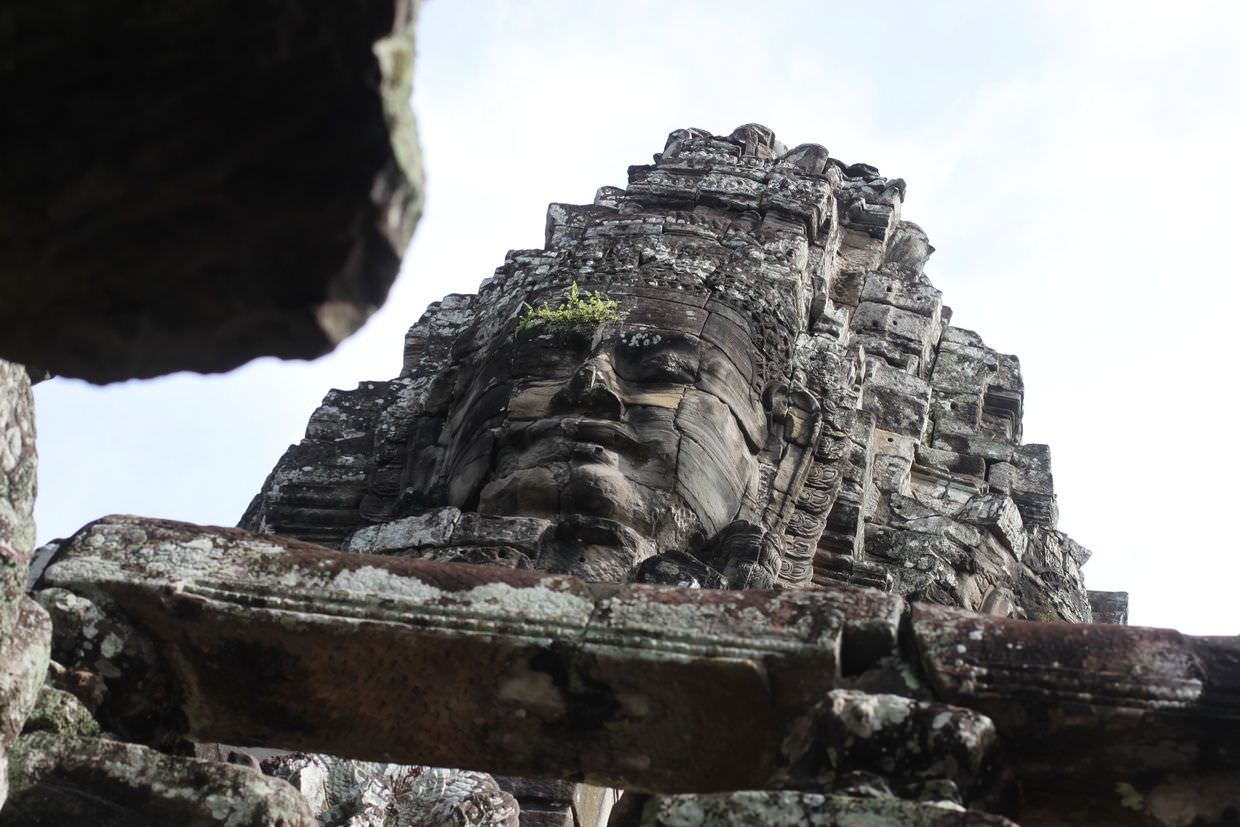
Inside and up to the first level, an inner gallery, the carvings here are purely religious, with many dancing Hindu gods. Beyond the inner gallery is the second level, the upper terrace, an open pathway that circles the central tower and sanctuary. Here the tourists gather and pose with the giant Bayon faces, up close and personal. Naturally we did the same. The faces are always in a formation of four, one looking in each direction, with varying degrees of preservation. Many still look stunning, and peculiar. Our guide knows all the best photo spots.
The sun is out, and away from the shade it’s unbearable. Beneath the umbrellas we wiped away the sweat with baby wipes. A Japanese tourist sits on the ancient stone railings, cooling herself with a fan, atop a sign reading, “Don’t sit on the balustrades”.
After a quick exploration of the dark central tower we climb down and exit Bayon. We look back at the beautiful odd thing from a distance, as an elephant and tuk tuk go by.
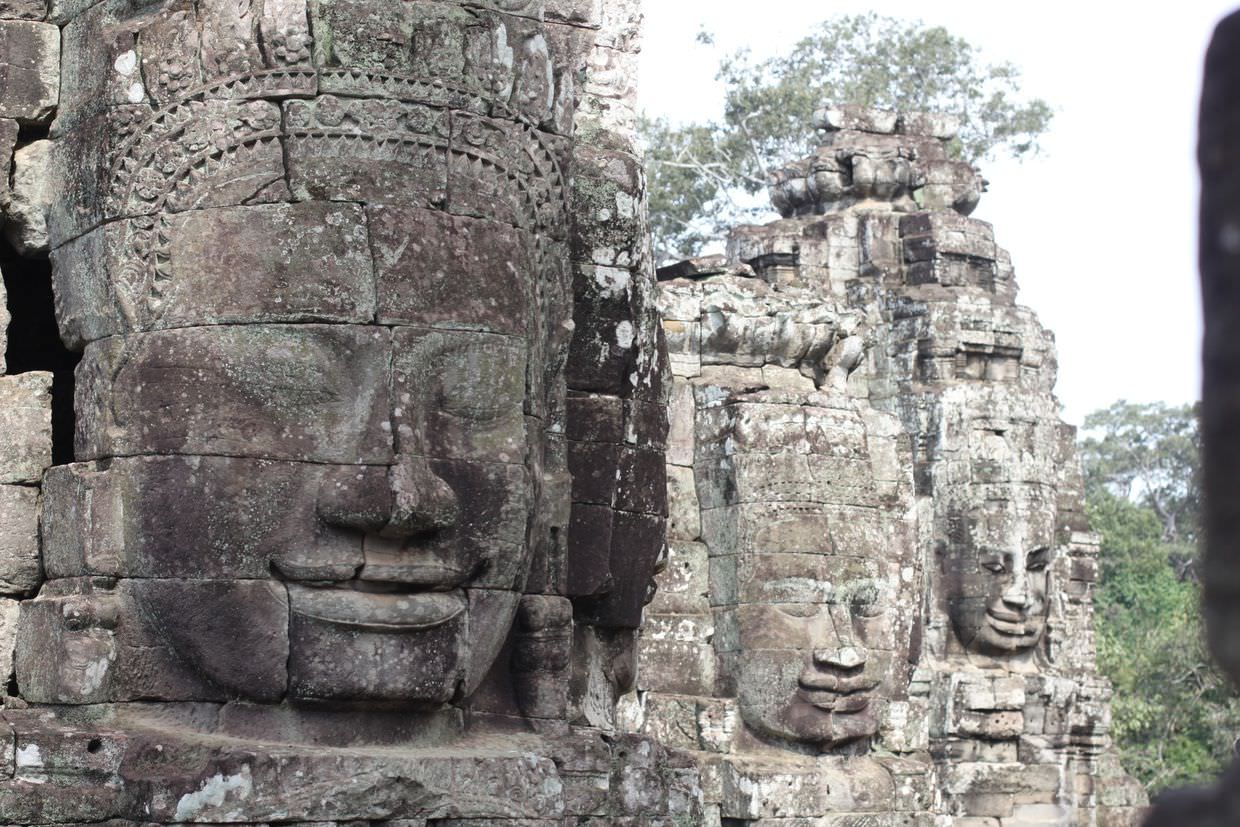
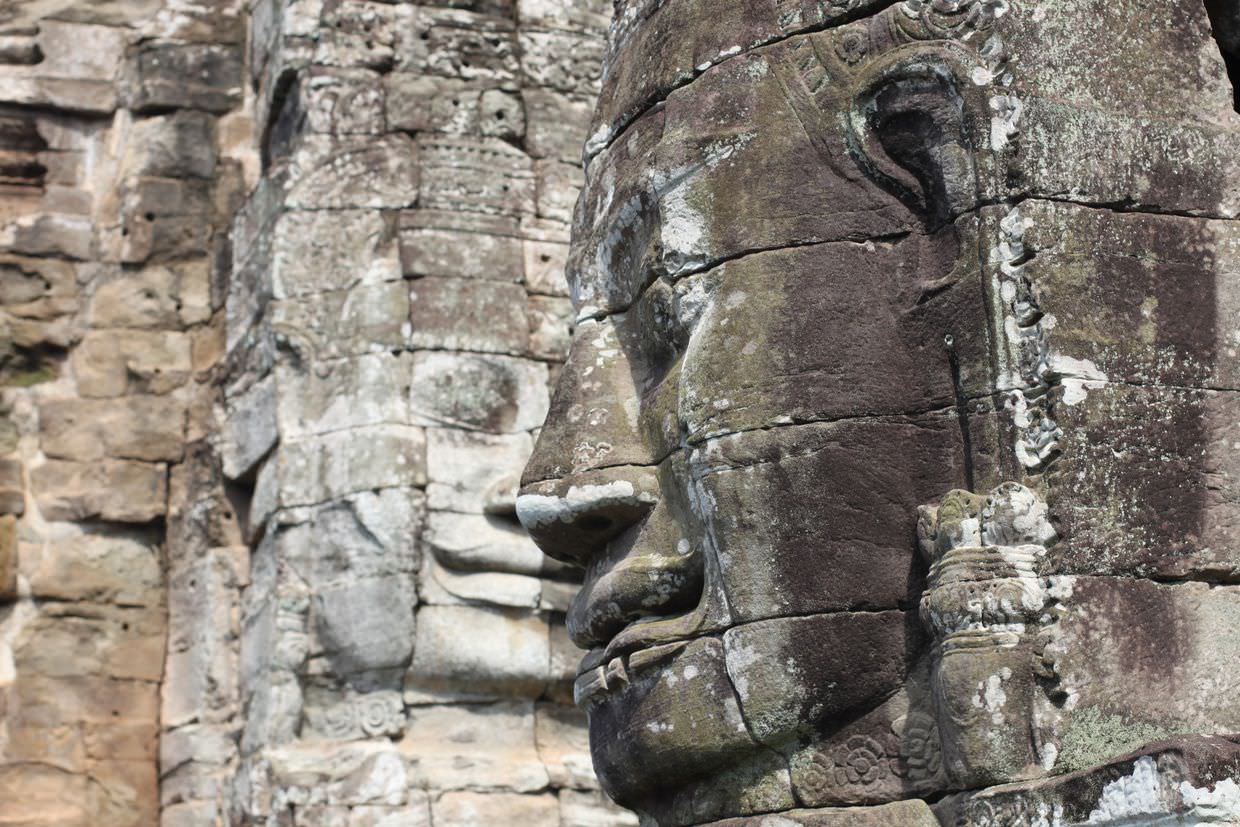
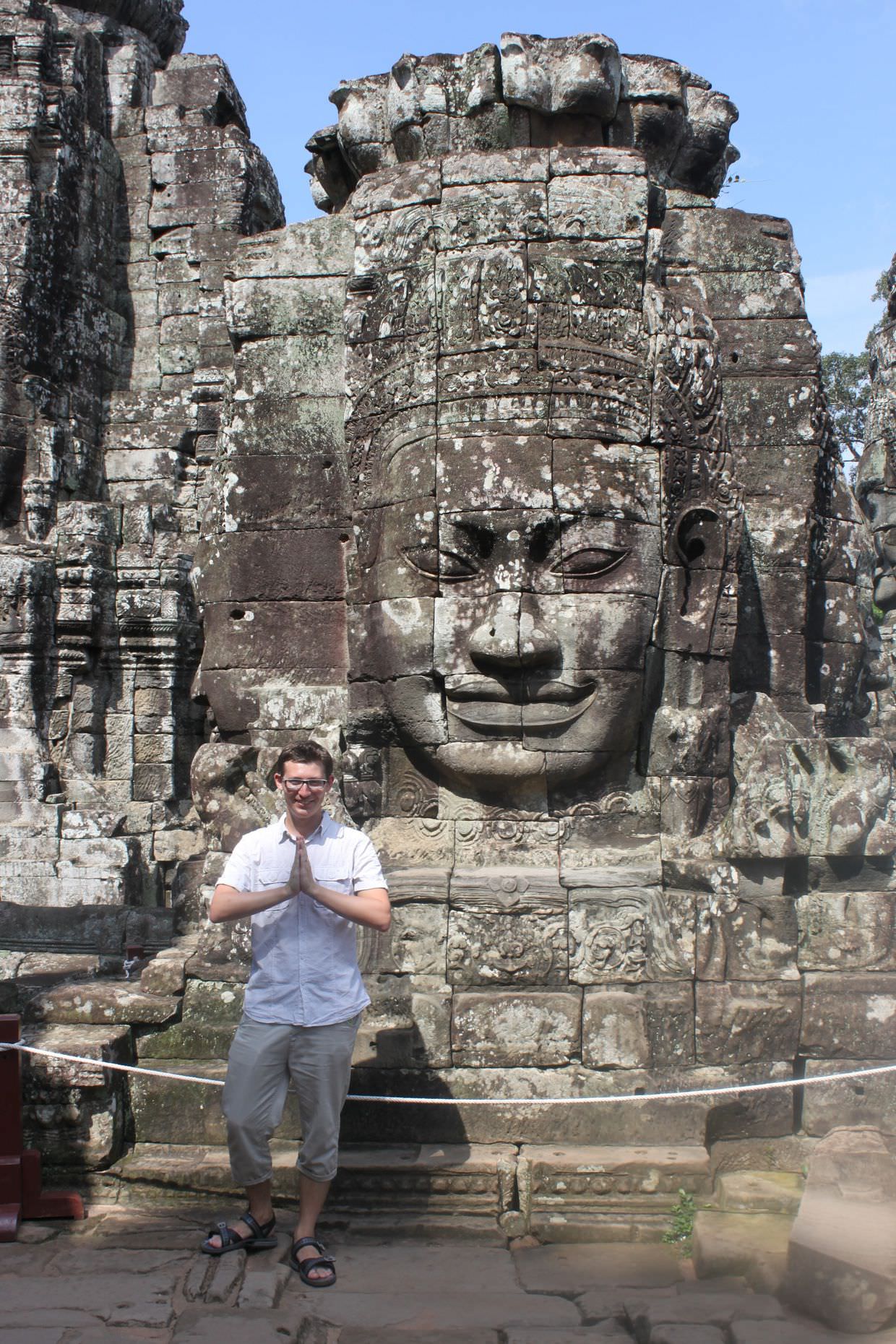
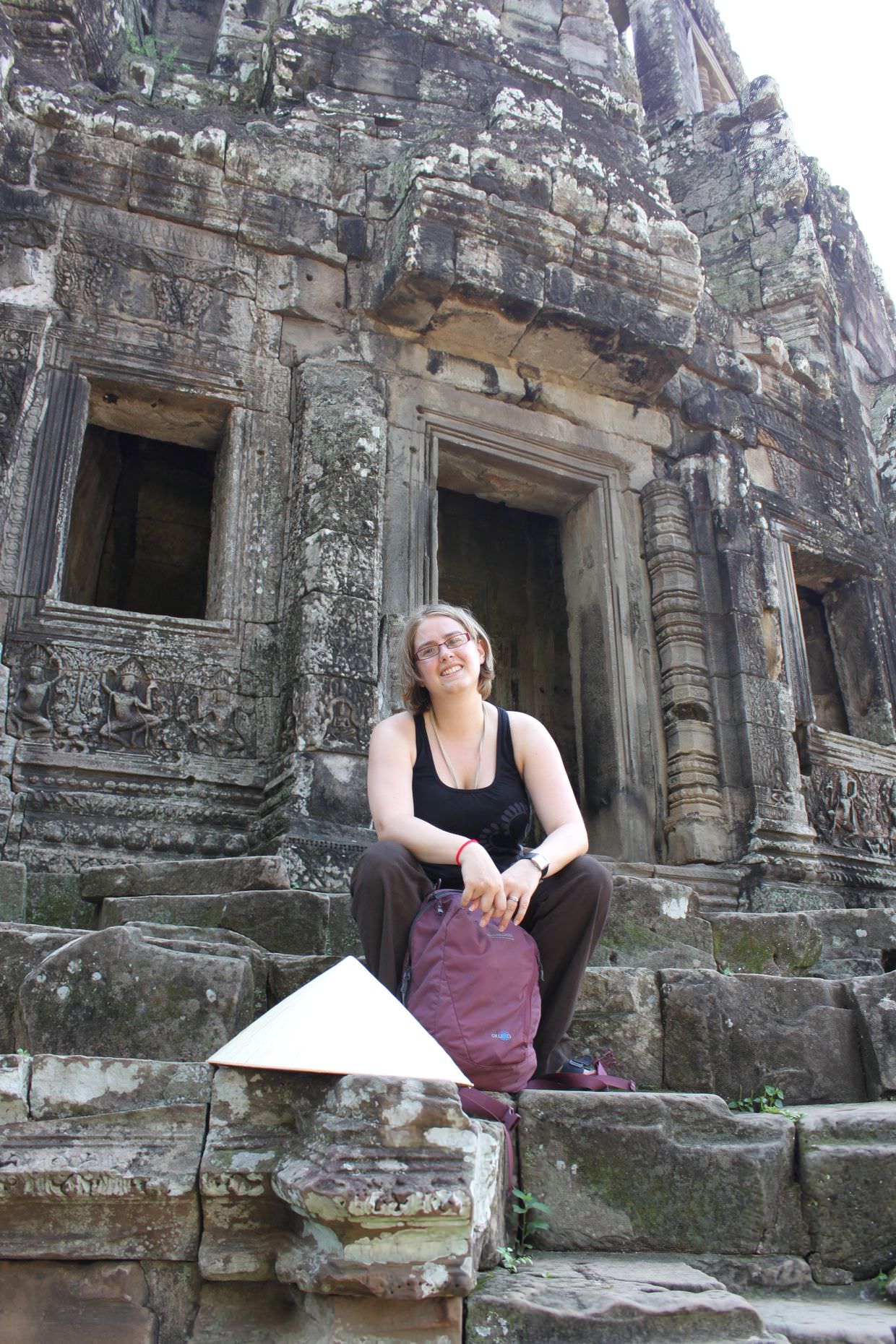
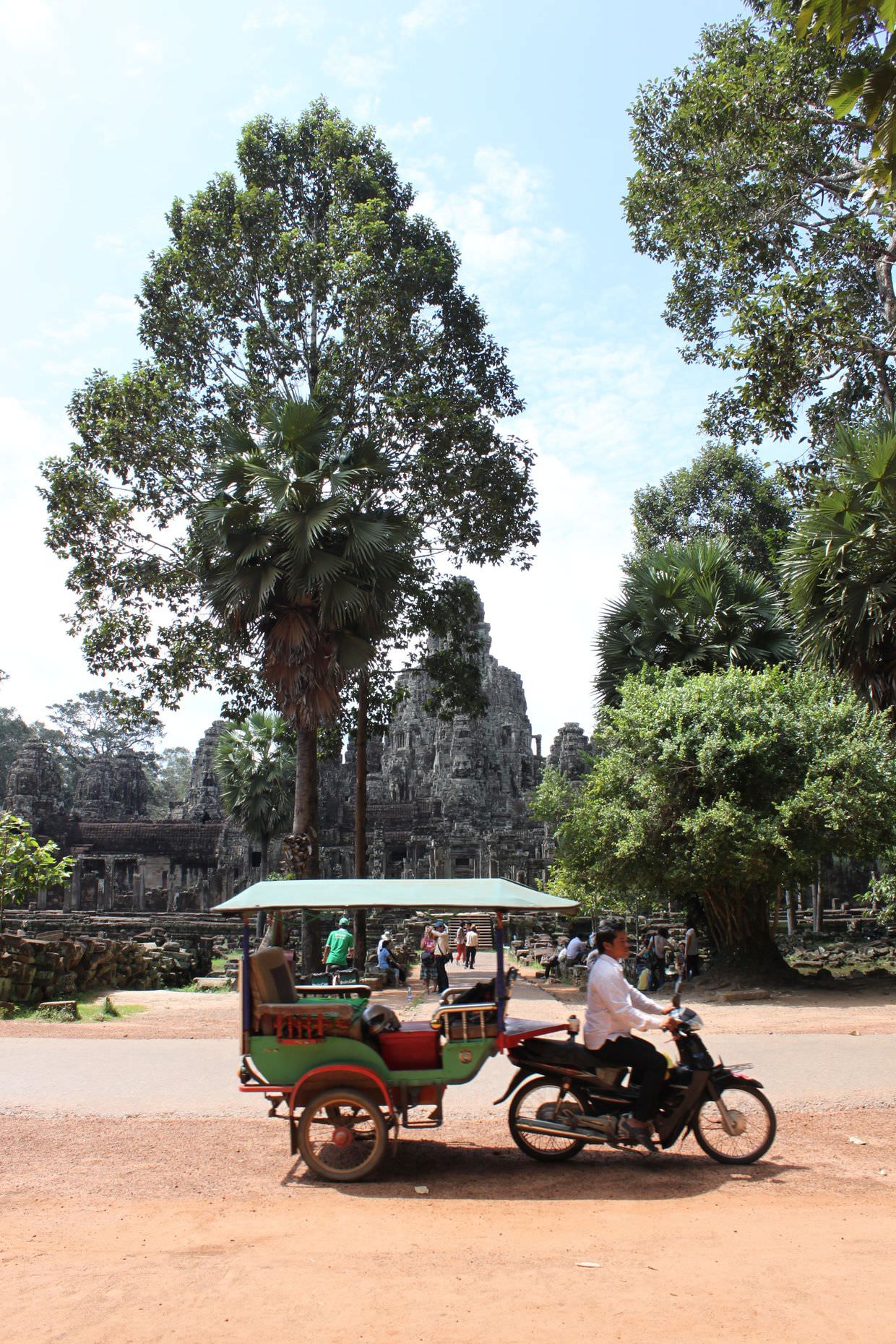
Baphuon temple
We walked North West to Baphuon, a temple painstakingly restored by the French. It opened to the public in April 2011, after some 51 years of restoration. In the sixties it was disassembled and labelled for reconstruction, but the work was halted and the plans destroyed by the Khmer Rouge. It’s a three tiered temple mountain (representing Mount Meru); you see, we’re temple experts now, using official terminology! Ha. As usual with Angkorian temples, the religion flip-flopped from Hindu to Buddhist and back again, depending on the religious taste of the king. A huge 70m long reclining Buddha sits on the West side.
Once more we sat down amongst the stones to listen to a story. I idly watch the butterflies flit about by a reflection pool. Sam meanwhile discusses Cambodian-Vietnamese-Thai relations, and recent tensions. A long bridge to our right leads up to the temple.

We’re left to explore the temple; up our first set of steep temple steps. Each level resembles a completed jigsaw, lovingly pieced together. From the top we took in the views, the reflection pools and bridge stretching out beneath us, and disappearing into a thick canopy, the trees too tall to see much else. The sun is out, and it’s getting hotter, Sam’s Vietnamese hat is working wonders; shade and air flow. Essential headwear. Down the west side we saw the pieced together remains of the giant Buddha.
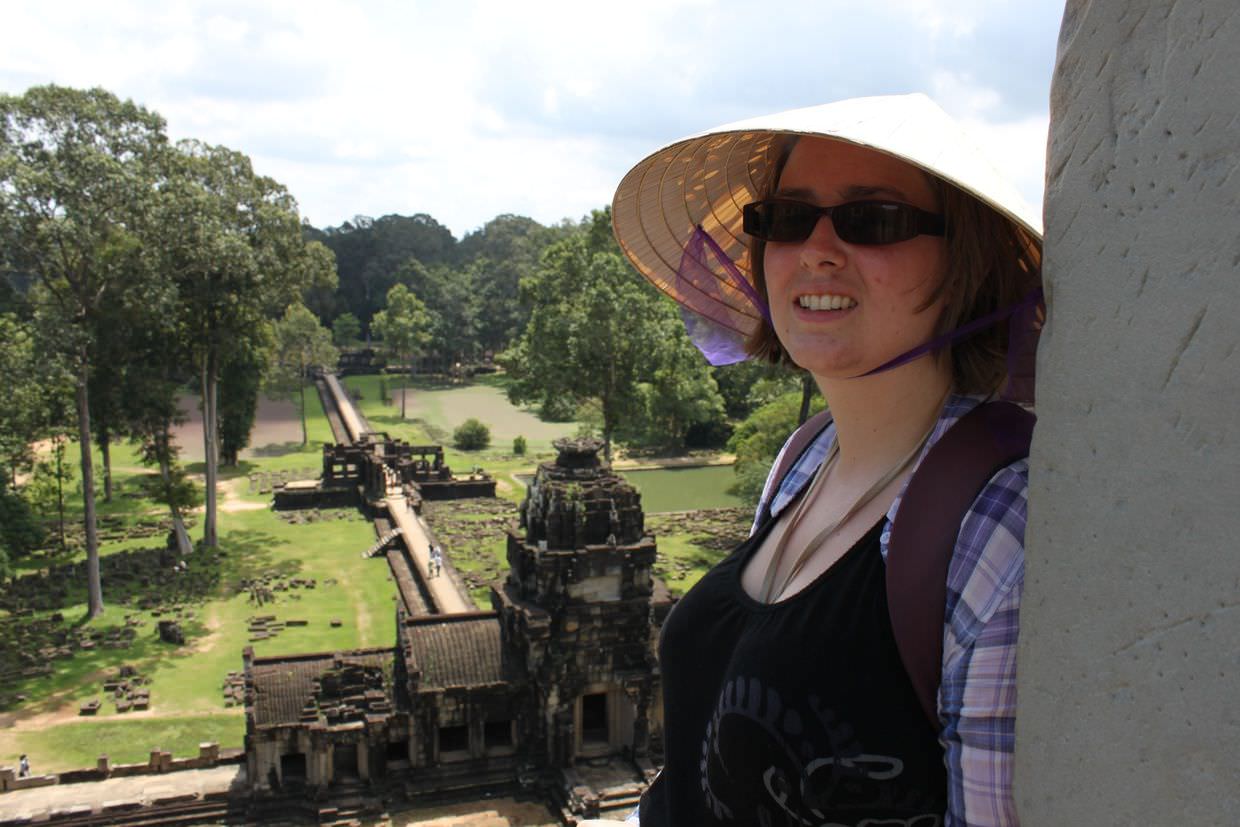
Phimeanakas temple
Not yet lunch time and to our third temple, Phimeanakas, via an ancient tree with a human nose. “There’s no story for this one”, the guide said. No matter, we clambered and explored the 10th century temple, over a thousand years old and still standing, despite everything. It would’ve been close to the ancient royal palace, though that was a wooden masterpiece, and has since disappeared.
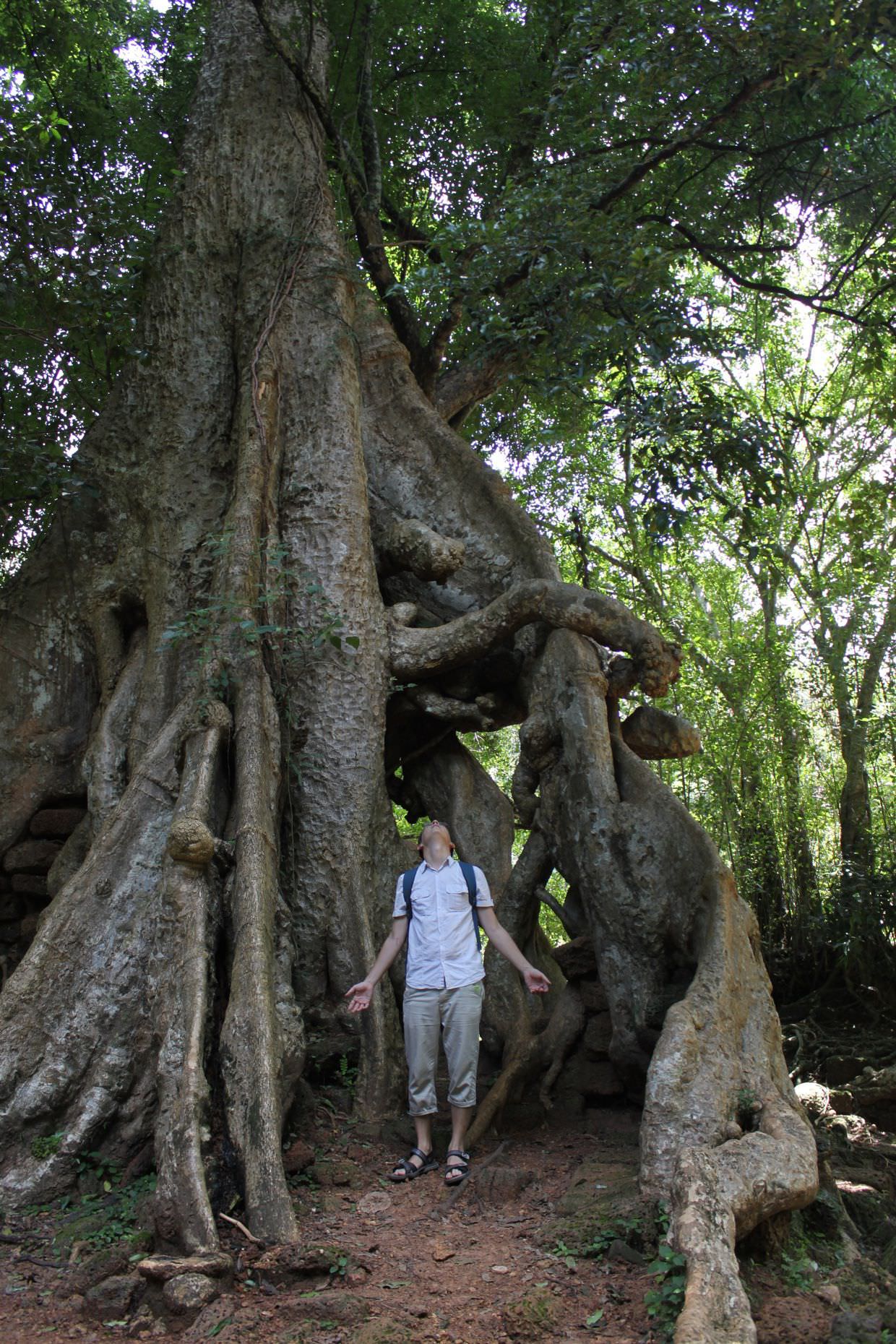
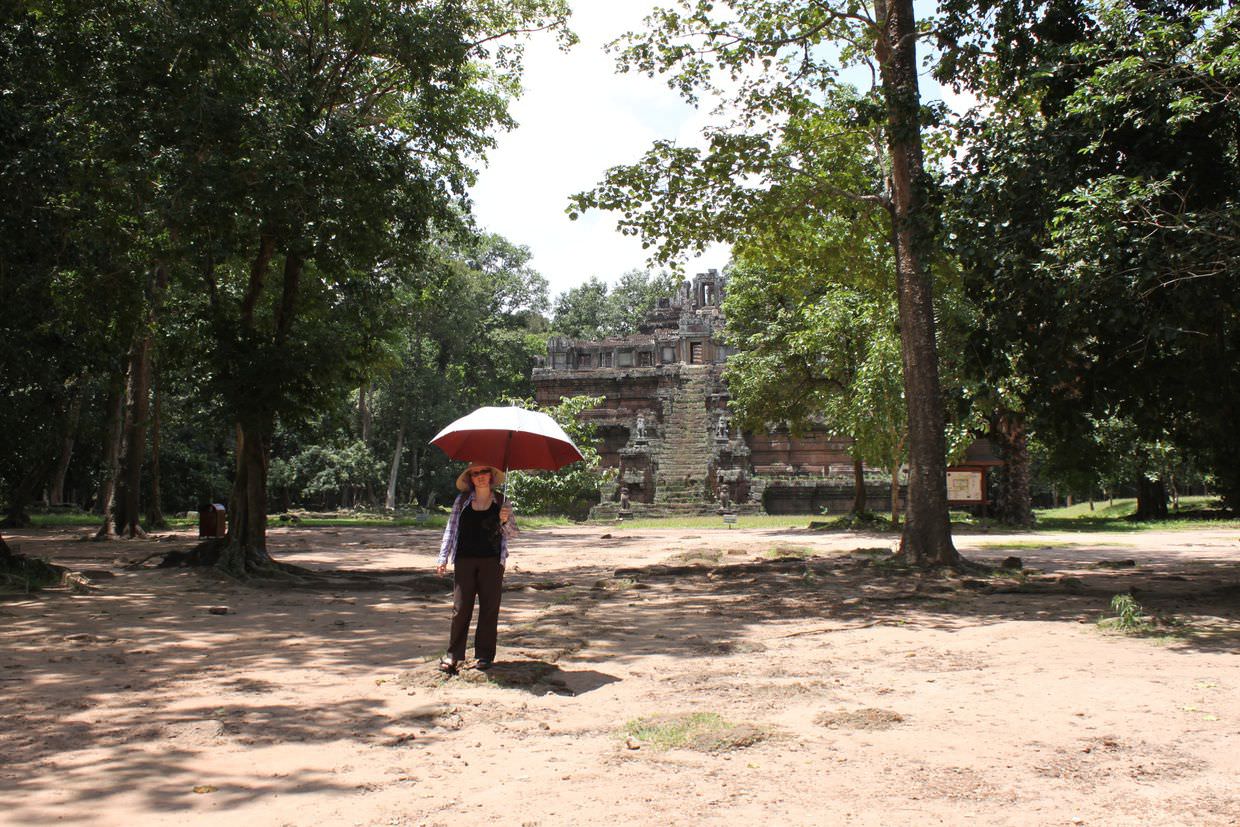
Further on we come out onto the Elephant Terrance and the Terrace of the Leper King. Our guide did a poor job of explaining this one, but from here the king would watch huge processions pass by, usually of his victorious returning army. By now we were very tired and hot, and there’s no shade on the terrace. As sweat poured down our faces the guide asked, “Lunch?”. At the tuk-tuk Vesna pulls out a bottle of ice cold water, “Oh wow, yes please, thank you ever so much”.
We ate at a small restaurant in front of Angkor Wat; rice, curry and cold drinks. We also encountered our first experience of children trying to sell us stuff, aggressively. Postcards, “You buy! One doll-ar”, “Ten postcards. 1-2-3… 10”, “You don’t want? What you want? Cold water? Drink? Scarf?”. Kids as young as five, up to 14. “You buy later. I wait for you”.
Angkor Wat
Post-lunch we head out to Angkor Wat, in the searing mid-afternoon heat. It is however one of the quieter times to visit. Like Angkor Thom, Angkor Wat is surrounded by a manmade moat, with a bridge into the complex. The bridge is adorned with Naga snakes, and a recent French recreation of a Naga’s head sits at the front, Sam marvelled at its intricate detail. At the entrance the stone pillars are littered with bullet wounds, shots fired during the Vietnam war, in a siege that saw the Khmer defending their beloved temple.
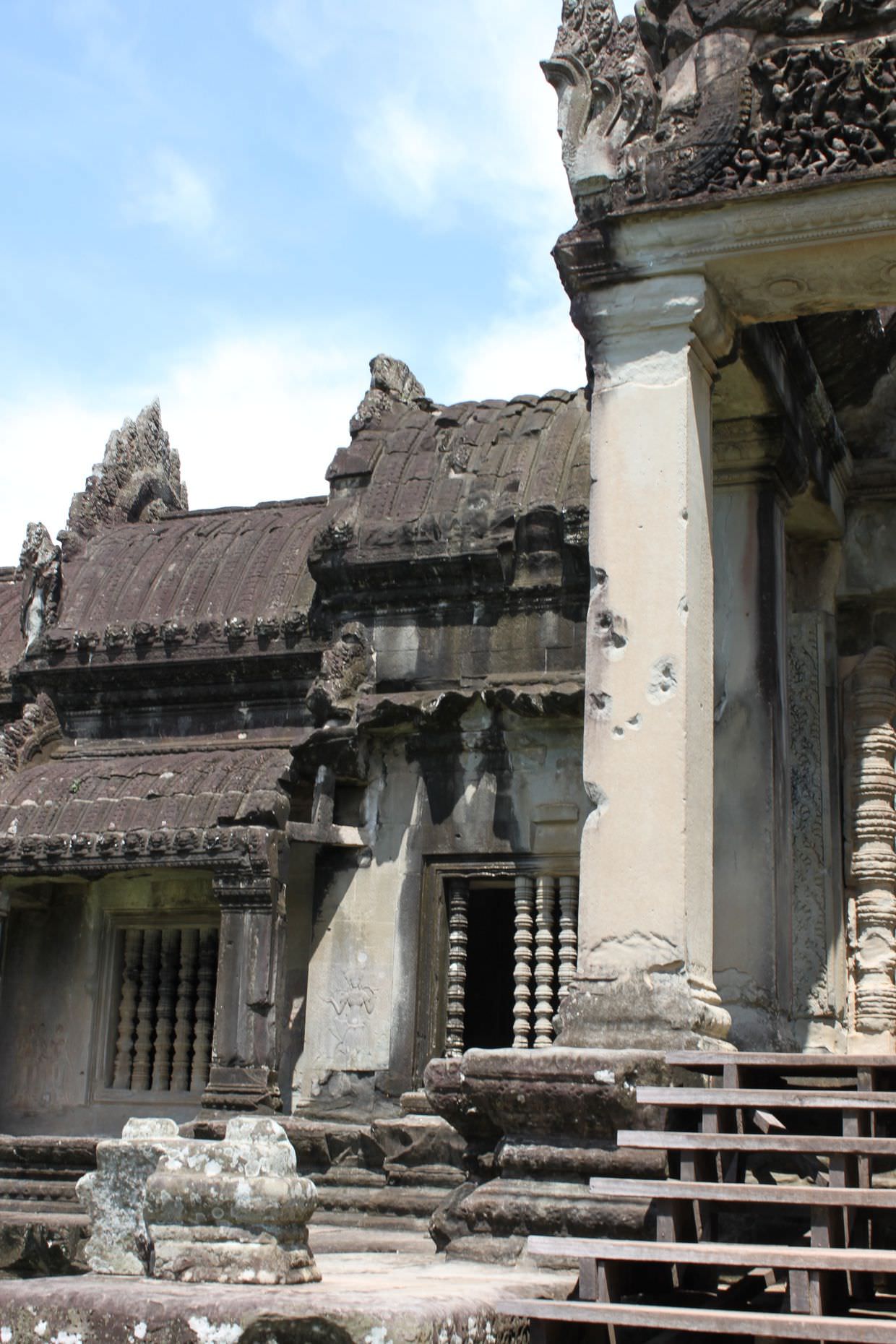
Inside the grounds were luscious, and the grasses green. Beyond two libraries, one either side of the path, were the famous reflecting pools. We posed against the reflections, Angkor Wat’s five towers visible behind us.
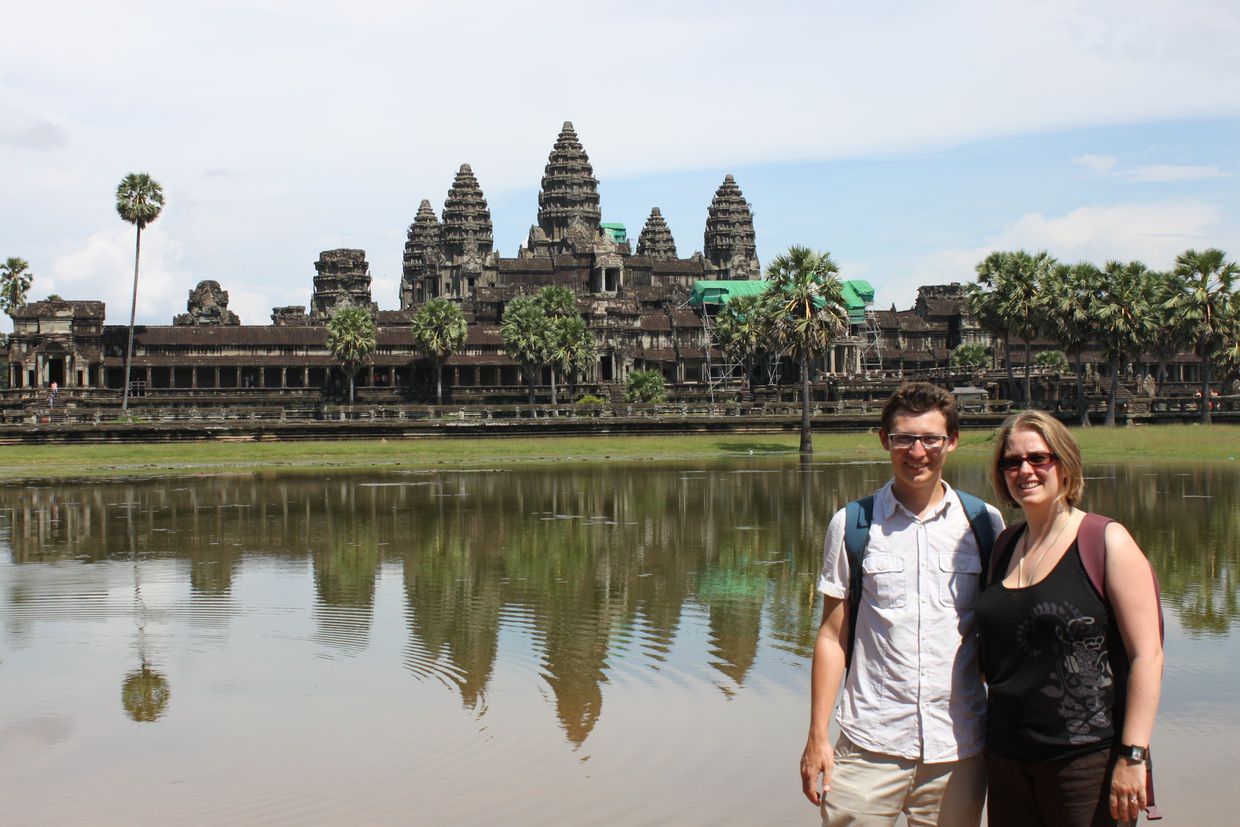
Having dodged more souvenir pedlars, we entered the vast temple. It’s surrounded by an outer gallery, with detailed stonework illustrating classic Hindu stories. The important details of each bas relief are highlighted, made shiny after years of groping by tourists and guides alike.
Oh dear, Sam’s looking a little peaky, the heat’s getting to her and she needs to rest. She went pale, and we cut short our tour of the galleries. We rested inside by four old water pools, now devoid of any actual water. Here there was once a gallery of a thousand Buddhas, but they’ve all gone too. Amongst the moss covered rooftops, dancing Apsara figures and muddy red inscribed pillars, we sat silently, taking time out to relax and enjoy what tranquility we had. We watched people pray and make offerings to a Buddha statue by the pools.
The temples have been subject to centuries of pillaging, whatever valuable artefacts there once were are long gone. All but stone left, too heavy to plunder, the temples feel like shells of their former selves, Angkor Wat included.
With Sam regaining a bit of colour, I carried her bag and we headed inwards, via a couple more galleries. Ah yes, there was also an unfortunate event with some ants. Tired, Sam had rested against a pillar as we heard about another Hindu story. Mid prophecy she proclaimed, “ANTS! Ants!”, they were climbing up the pillar behind her in their hundreds, and now Sam had them in her hair. She did the ant dance, hands waving, legs flapping, and we moved on.
We crossed into the centre of the temple, an enclosed courtyard with a towering holy level in the middle. The precarious ancient steps up to this level are now closed, in favour of a new, wooden route complete with queuing system – surely a very recent addition.
From the top level we had views out across the Angkor plains, trees spread out in every direction. A yellow bulb of a helium balloon bobbed amidst the forest. Everything is so very flat, and there’s no high rises or buildings to spoil the view, just a dusty haze. I wonder how long it will stay like that with tourism booming. A monk dressed in orange passed us by, quietly placing golden metal petals on each of the Buddha statues, some sort of ritual we couldn’t understand. We stayed up here for a while, the cool breeze that passes through the windows is lovely, and it’s quiet too, relaxing.
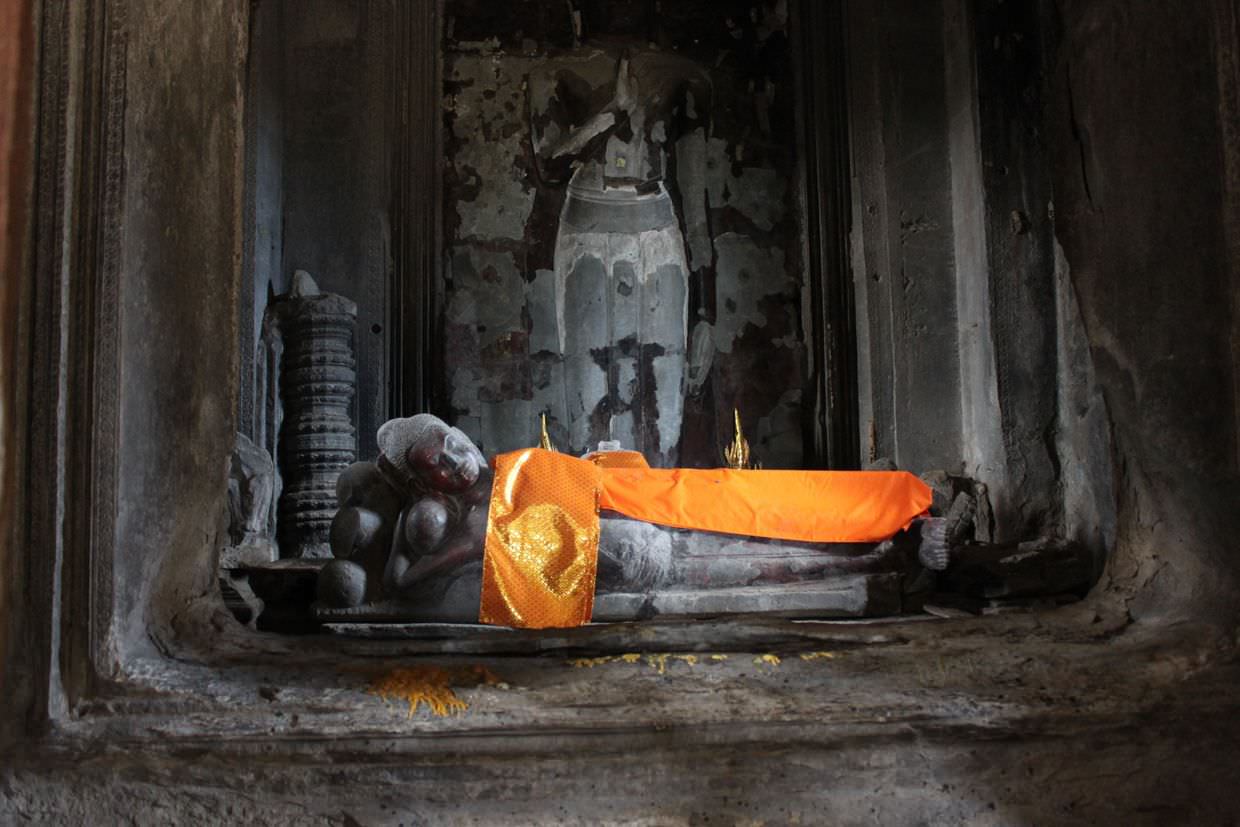
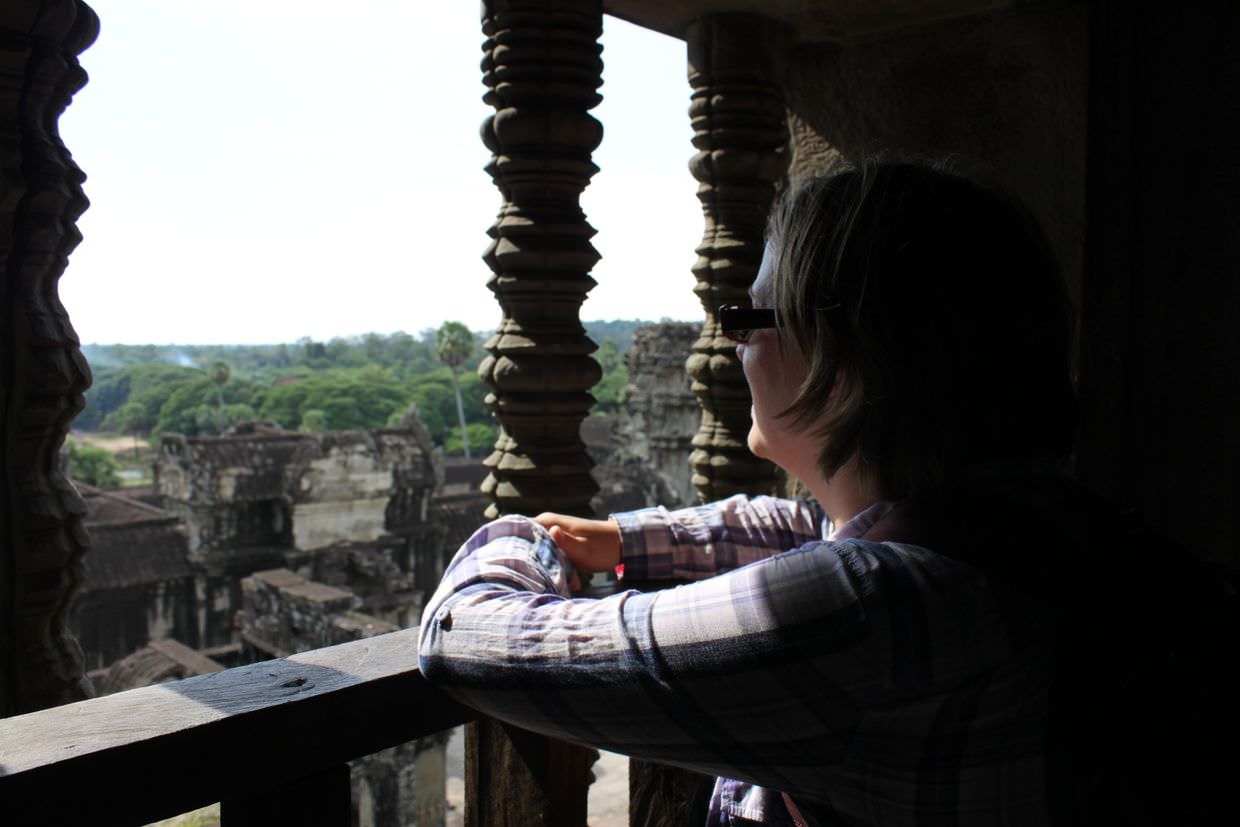
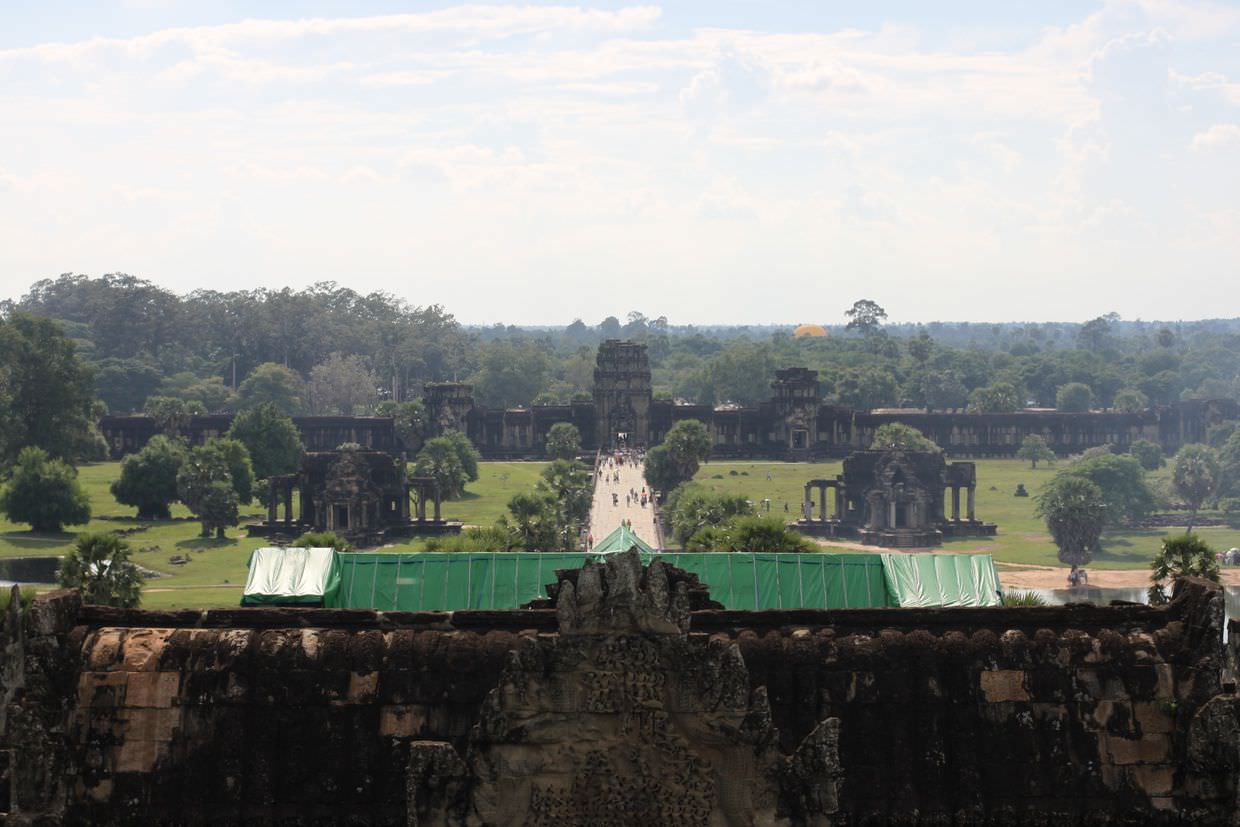
We left Angkor Wat, passing a macaque on the way out. I think it really is best from the outside, it looks simply fabulous. Inside is a little disappointing, a shadow of its former self. Although it was never quite finished, many carvings lie half finished. Late afternoon now, the sun still burning, we asked about the best place for a sunset. “Bakheng”, our guide recommended, a mountain temple atop a hill.
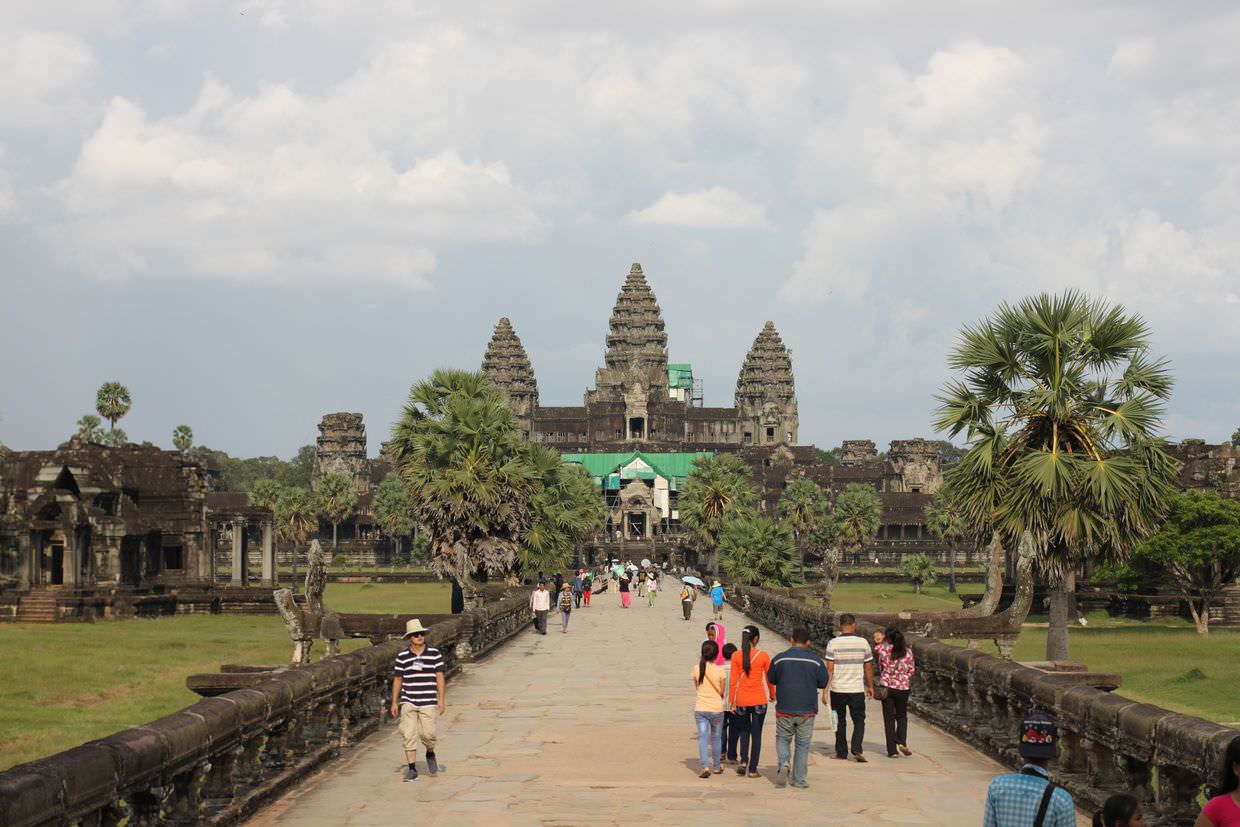
Bakheng temple
As we climbed the spiralling gravel walkway up the hill the clouds materialised (as if out of thin air). From the summit the views are event more spectacular. In the distance is Tonle Sap, an enormous lake. The temple itself is one of the oldest, 889 AD or so. Sadly much of the reverence of this temple is lost, as people use it only as a viewing platform.
By now the clouds had turned to rain, and as we sheltered under an umbrella we realised there wouldn’t be a sunset worth watching. Slowly people left, and eventually we didn’t have a choice. The officials closed the temple early. No sunset tonight folks. Time to go. Disappointing, but I didn’t feel like we were missing much. It was like this every night of our time here, no beautiful sunsets to be had.
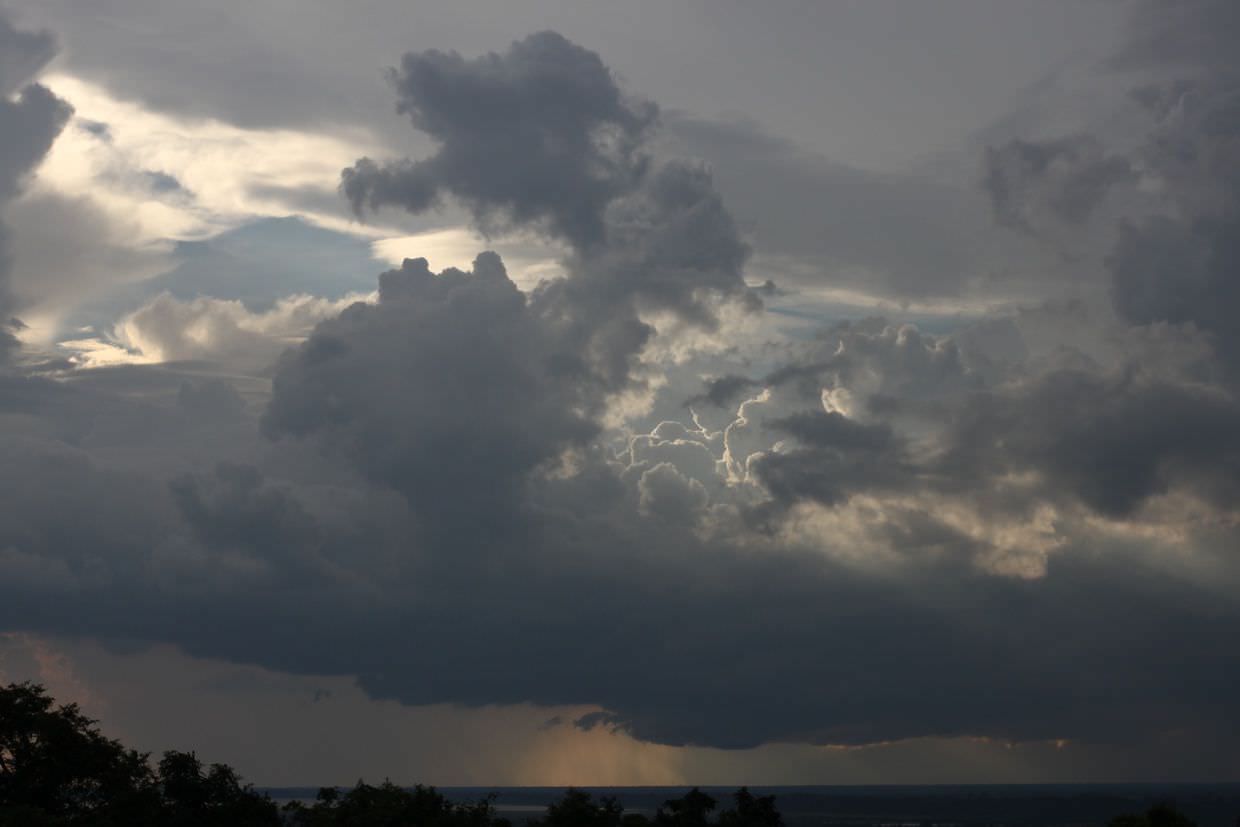
On the tuk-tuk home the darkness set in. Our guide had helped with a lot of things, but he wasn’t stellar, we didn’t choose to have a guide on any of our future temple visits.
Back at the hotel we recovered from the intense day, and stayed within the hotel for the evening. Our hotel food was quite excellent, and cheap, and we ordered more of the spicy salad, and today’s Khmer dessert specials, Nhom Bagn Bev. It’s hard to describe, it’s sort of like semolina cubes. Anyway, I tried it, and I’m happy I did, but I wouldn’t again.
What a thoroughly exhausting day. We went to sleep with a Cambodian bed time story, from a rolled piece of paper on my pillow.